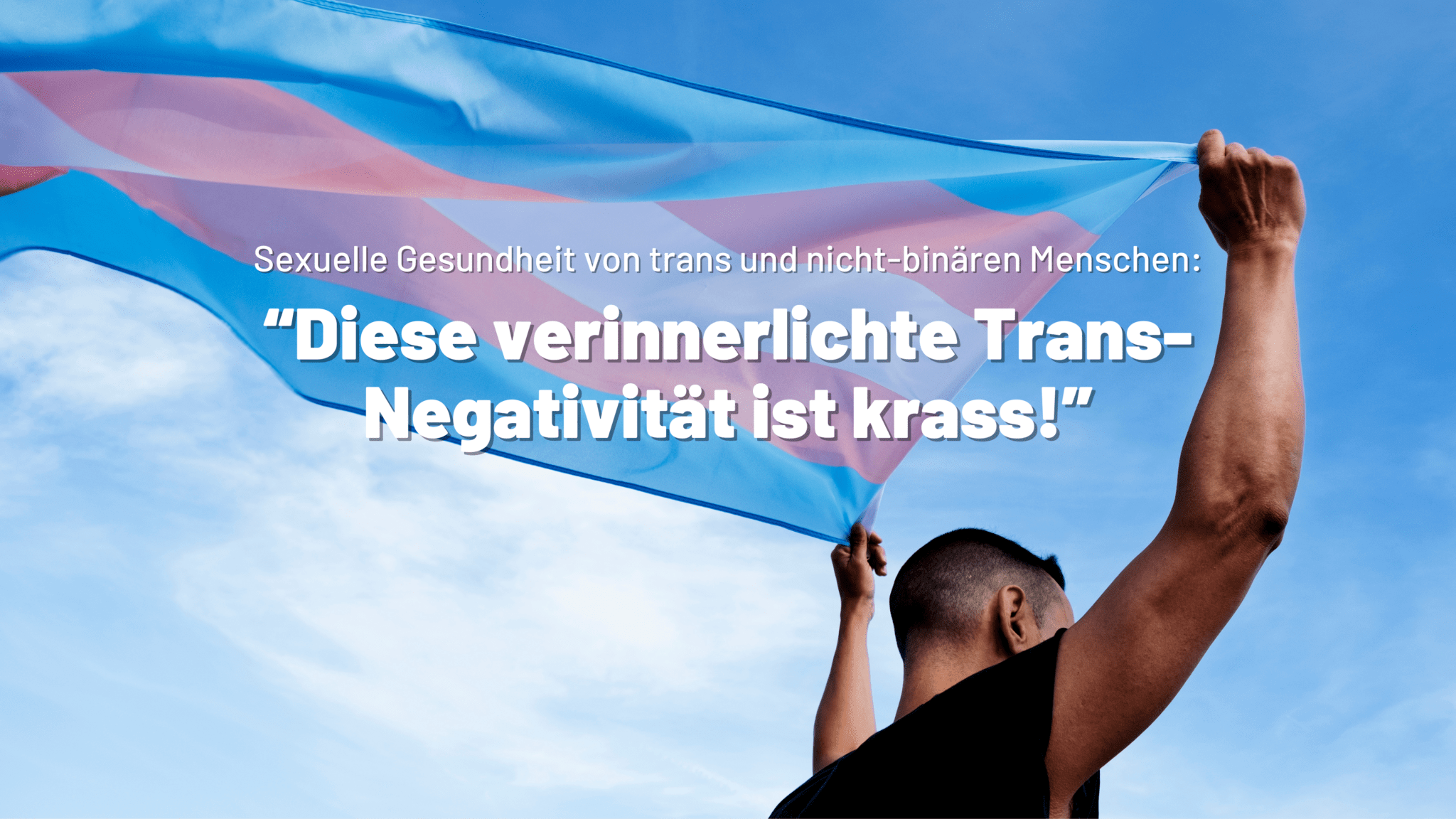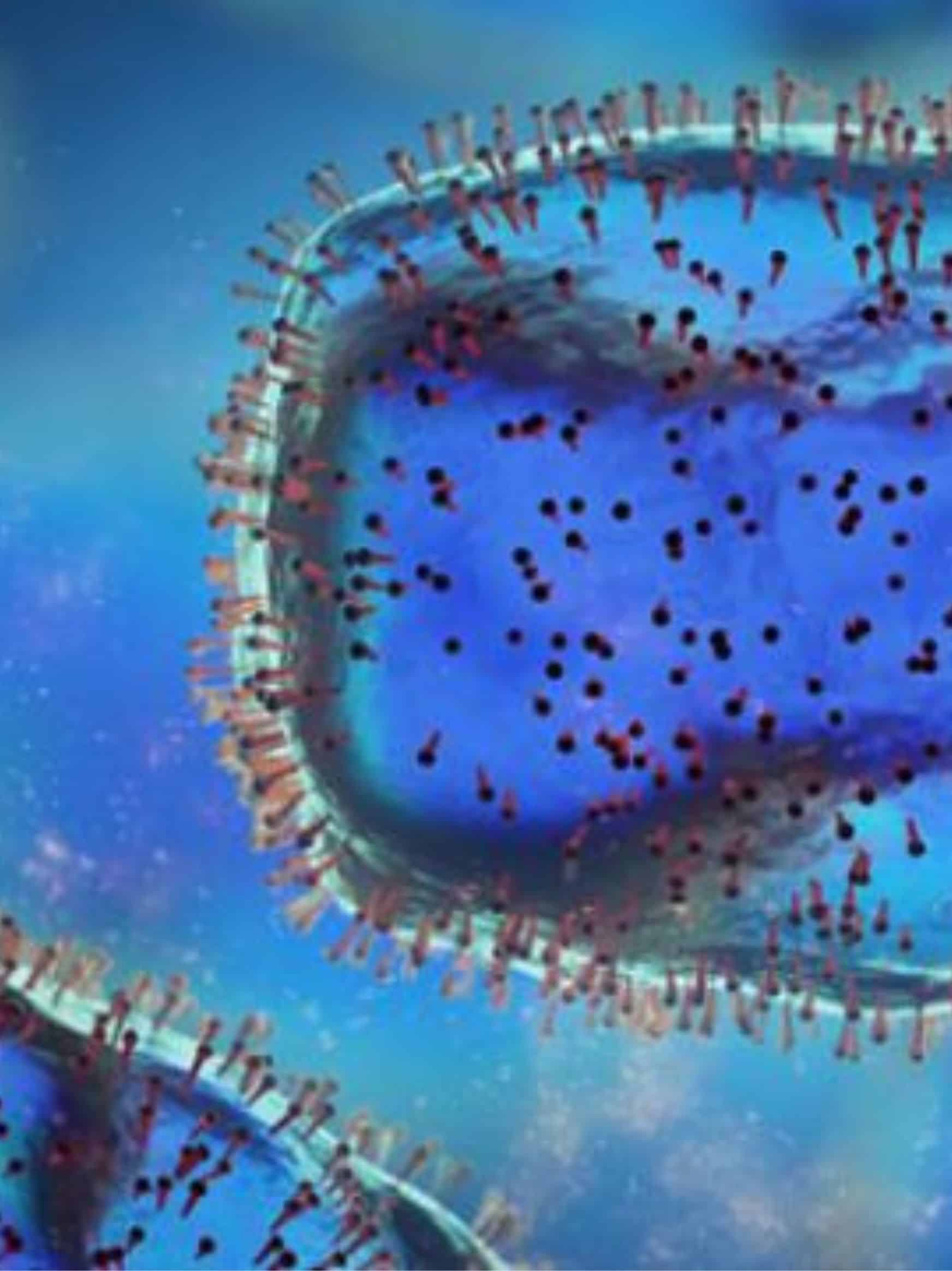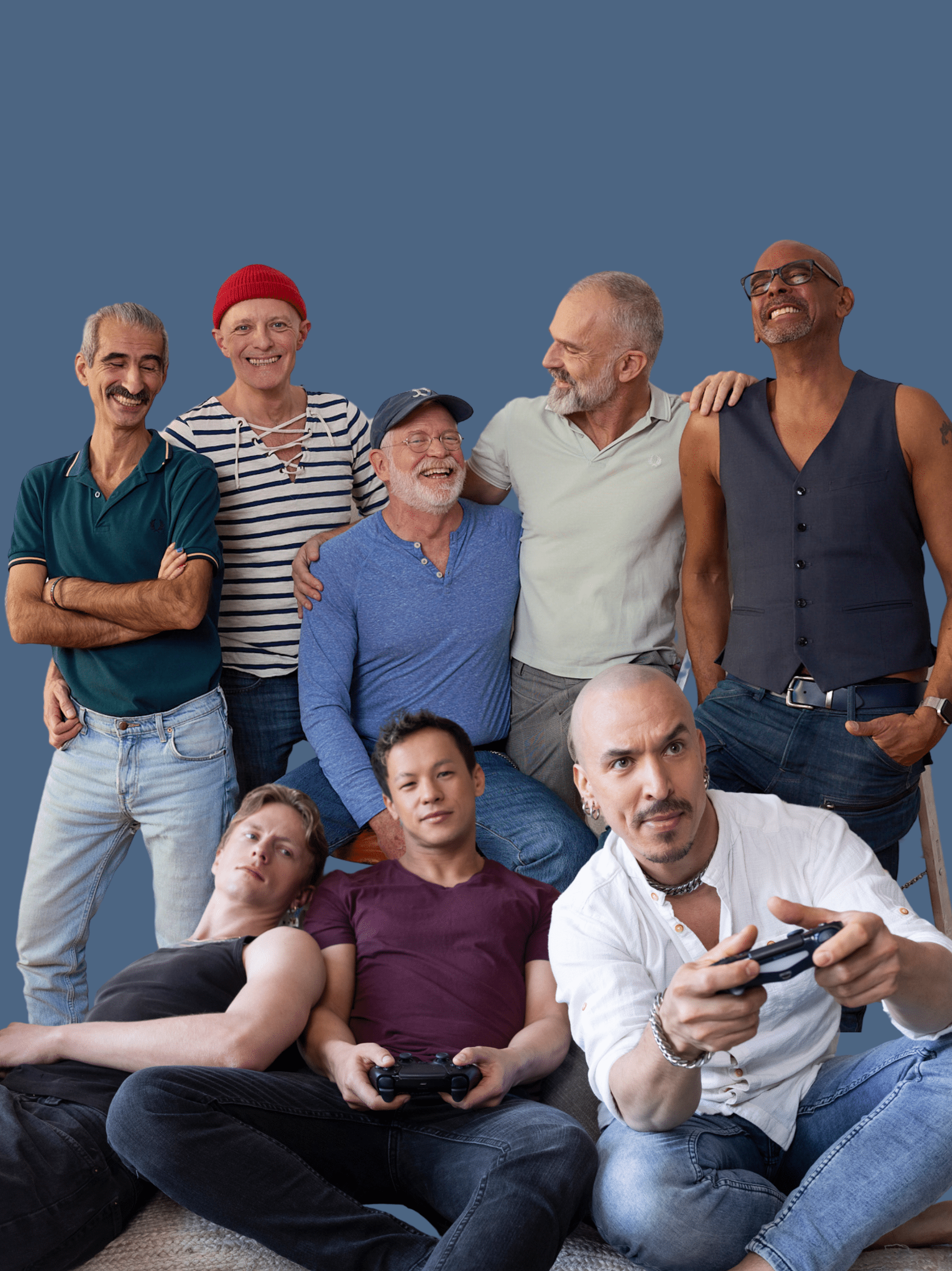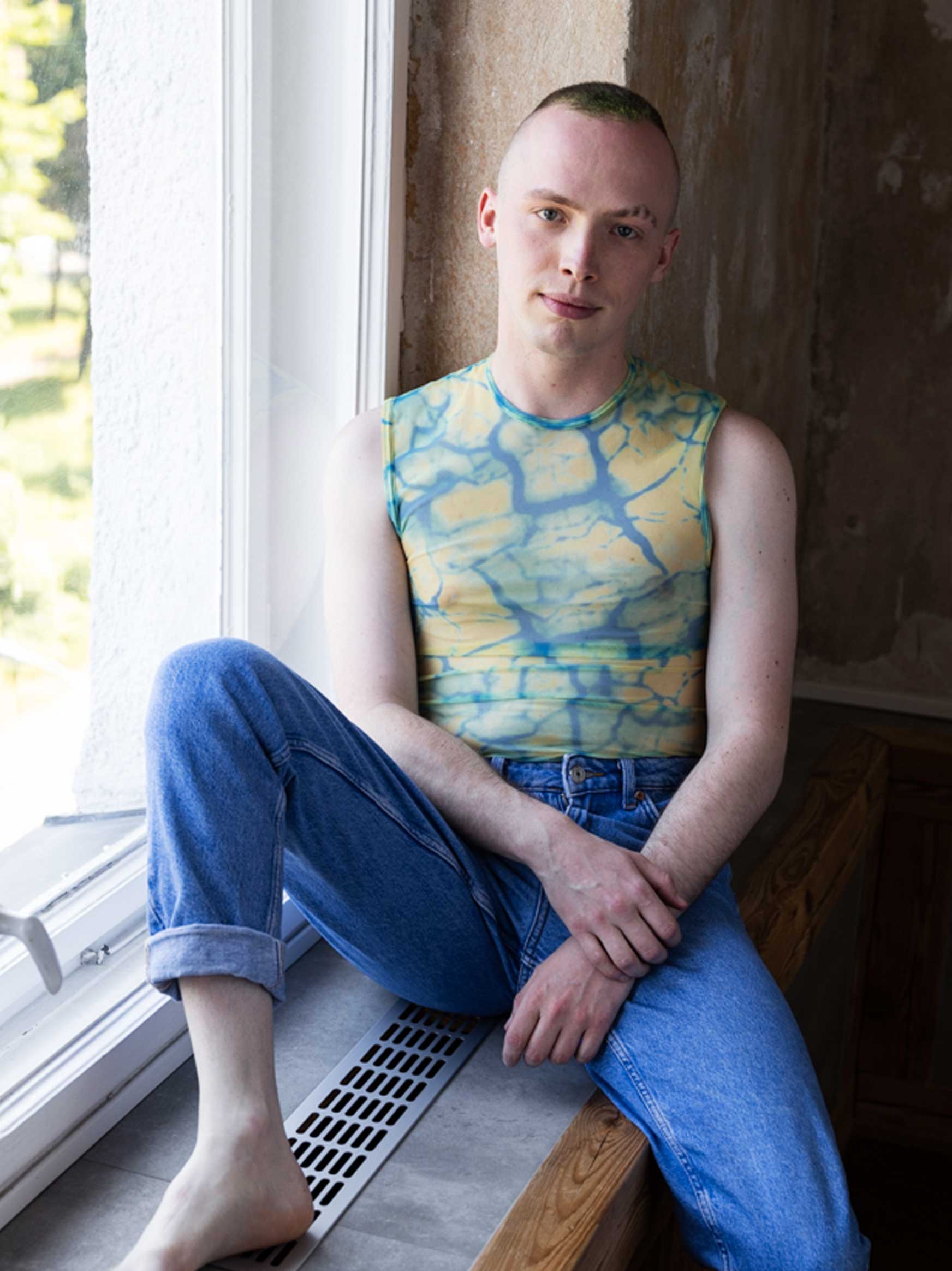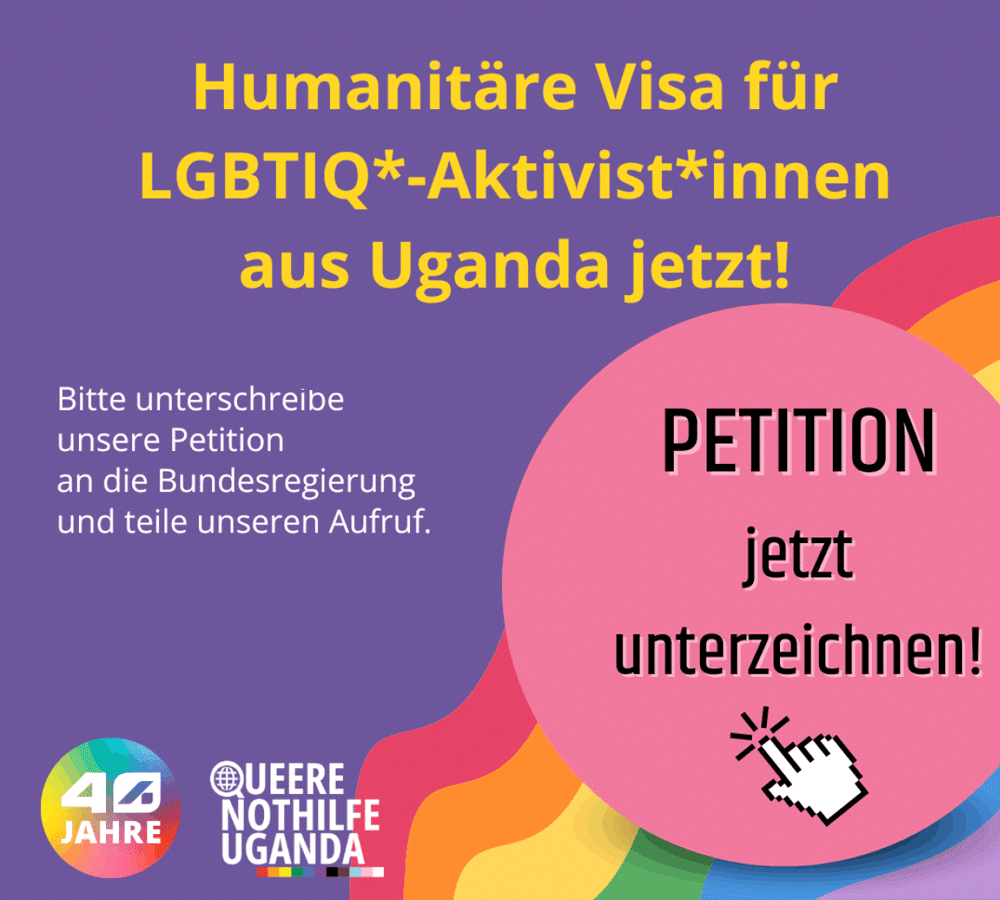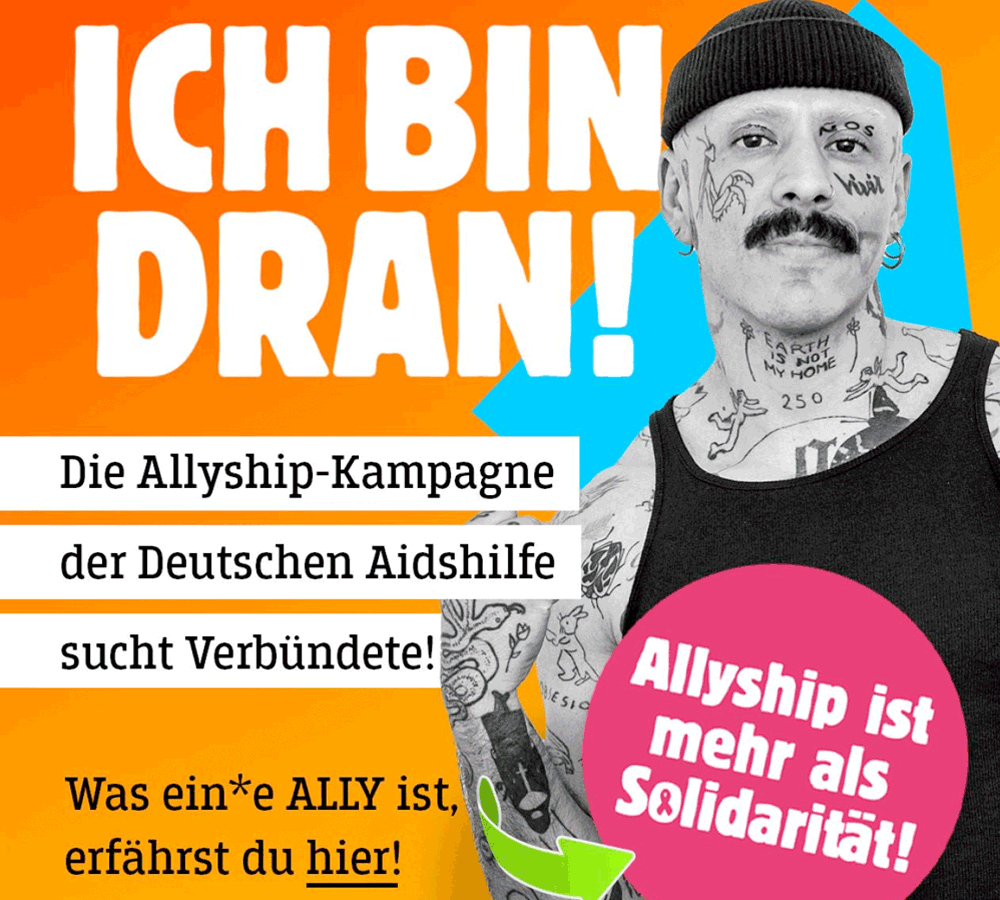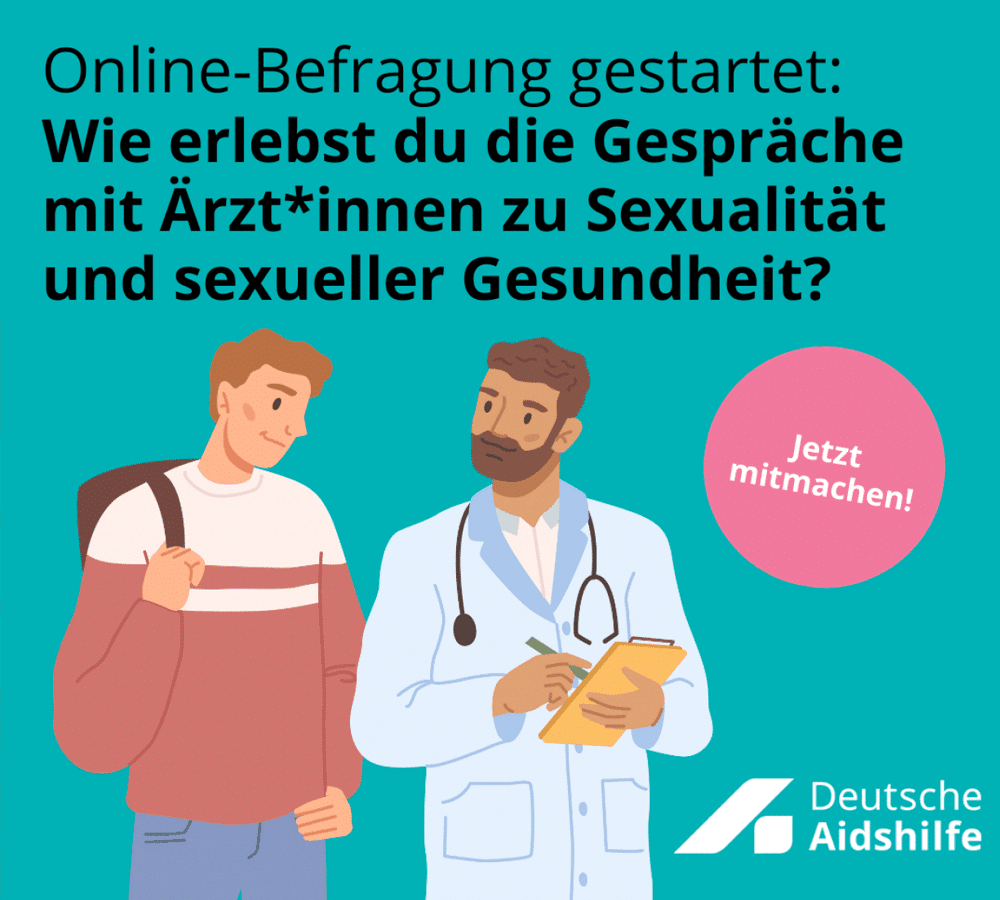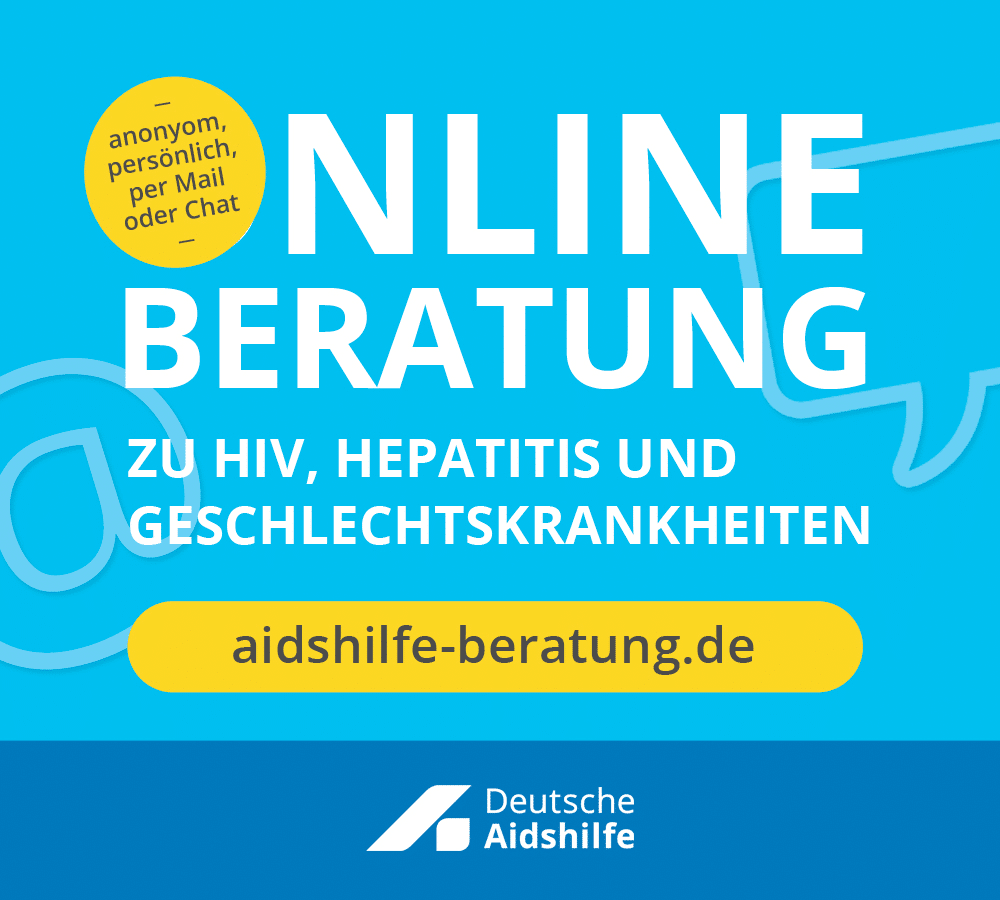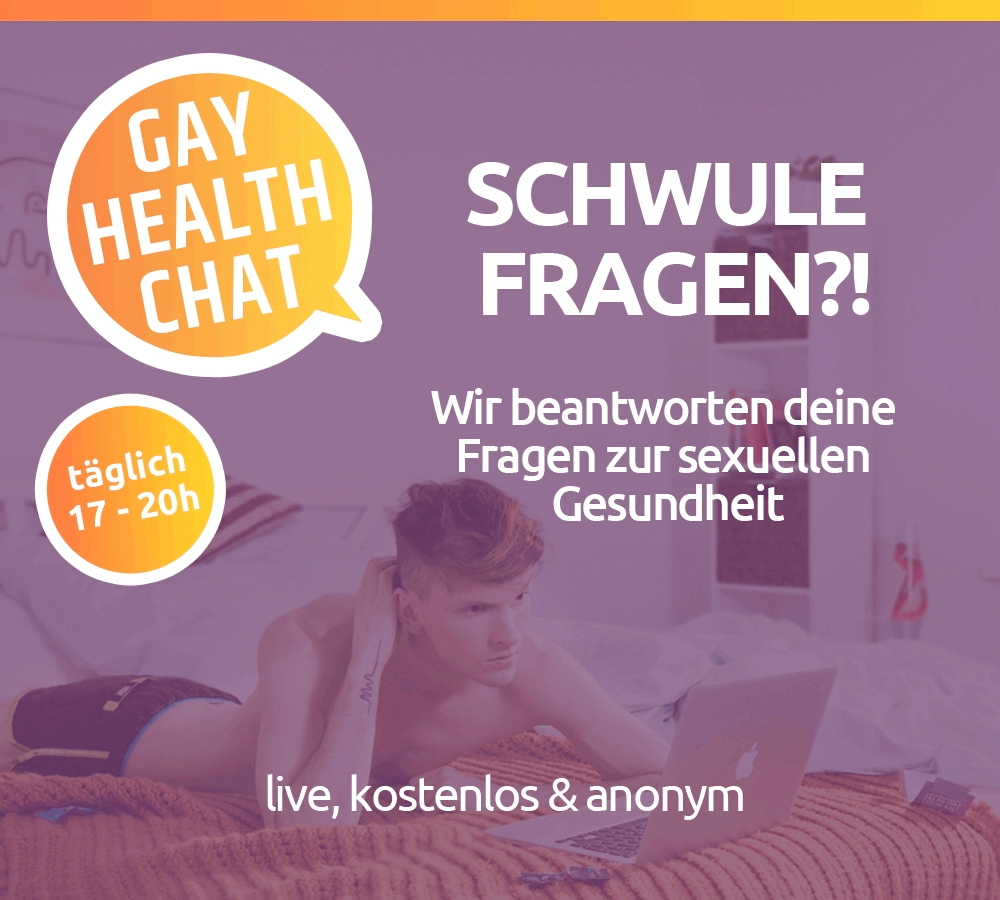Chris, thank you for taking the time. What was the starting point for the realisation of this research project?
The starting point for the project was that although there is a great deal of community knowledge, there was no reliable data available for German-speaking countries. Against the background of the international data situation, e.g. in North America, it was obvious that people from the trans and non-binary communities also belong to the vulnerable groups with regard to HIV and STI. This gave rise to the idea of collecting this missing scientific data together with the RKI.
What were the aims of the research project?
The goals were diverse. On the German AIDS service organisation side, we had 4 subject areas that interested us. These were
- How is sexuality and language perceived and experienced?
- What aspects play a role in a positive self-image?
- What barriers are there to utilising existing services in the context of sexual health?
- What factors influence sexual health?
The RKI's aim was to obtain data on the spread and prevalence of HIV and STIs in the relevant communities and to identify factors that play a role in sexuality and therefore in sexual risks. In other words, to determine needs and experiences in the context of sexuality, HIV, prevention, counselling and care.
In other words, the RKI was more concerned with the quantitative part and the DAH with the qualitative part. Can you outline this in more detail? In other words, how was the project structured and how important was participatory research?
The participatory research approach was the element that connected both parts. From the outset, it was important for both sides to involve community representatives. For example, there was a project advisory board made up of representatives from the communities that accompanied the project from start to finish. The advisory board played a critical role in the monitoring process, for example in the context of feedback loops. However, it was also important that the project was consistently carried out and implemented by people who were and are themselves representatives of the relevant communities, despite a number of staff changes during the course of the project.
The online questionnaire was also developed in a participatory manner at the RKI and was completed by over 3,000 people in the end.
At DAH, we also conducted interviews in various forms. What was unique and new was that we combined the data collection with elements of empowerment for the participants. At the weekend events, for example, we initially wanted to create a space that allowed people to talk about these very intimate topics of sexuality and sexual health and to show their vulnerability in the process. It was important to us that everyone could benefit and take something away with them. We didn't just want to "explore" the people, we also wanted everyone to be able to take something away with them at the end. Be it new contacts, new perspectives or new knowledge. In addition to these three weekend events, there were also one-day events, two completely anonymous online events and four individual interviews. In the individual interviews, it was important to us to reflect the perspectives that were neglected in the other surveys. We had a total of 59 participants in the qualitative part.
After a tweet from the RKI, there was a huge shitstorm and TERFs, as well as other opponents, were called upon to sabotage the survey. Of the 10,000 completed questionnaires, only 3,000 could be analysed in the end.
That really sounds like a very exciting and worthwhile approach. What challenges did you face in the project?
One of the biggest challenges with the questionnaire was that it had to be subjected to very intensive data cleansing. The reason for this was that there was a huge shitstorm after a tweet from the RKI and TERFs and other opponents were called upon to sabotage the survey. Of the 10,000 completed questionnaires, only the 3,000 mentioned above could be included in the final analysis. This also shows once again how much rejection there is and how active the opposing side is online. Nevertheless, and this is the most important thing: so many people honestly filled in this questionnaire of more than 100 questions because the topic was important to them.
Another challenge was that we unfortunately did not manage to reach all people from the different trans and non-binary communities in the qualitative part. For example, there were only a few trans women or HIV-positive participants overall.
Perhaps we should have organised another weekend explicitly for trans women only. But these are very important findings that we would like to try to take more into account in follow-up projects. Because if the study has shown one thing, and this is not really a surprise, it is how diverse the trans and non-binary communities are overall.
This brings us to the results. What are the key results and findings of the study?
I would once again differentiate between RKI and DAH. An overarching key finding was the diversity of the communities in terms of gender identities, but also in terms of sexual orientations and bodies and lived sexuality. A broader understanding of safer sex among the participants, which goes far beyond the understanding of safer sex as protection against HIV/STI and also includes, for example, psychosocial aspects such as consent and communication, is one of the key findings. The aspect of consensus and communication in particular ran through all the events. That it is important to be asked how body parts are named, but also to ask questions yourself. It became clear that it takes more than pure HIV/STI prevention to feel safe to live one's own sexuality with others.
On the other hand, there was also a not-so-surprising finding that highlighted the inadequate care situation for trans and non-binary people in the area of sexual health and the counselling and testing landscape. Nationwide, three projects were repeatedly mentioned in the interviews that were rated as good. In the qualitative section, projects with a peer-to-peer approach were rated particularly highly. Projects without such an approach tended to be rated lower. However, this is also a point in which the results of the RKI and the DAH differ, as the RKI also explicitly asked about this again. According to the RKI survey, 62.4% of people were also satisfied with the counselling, even if it did not have a peer-to-peer approach.
The final key finding was how important prevention knowledge is for personal empowerment and the importance of knowledge sharing in communities and between peers. These are factors that lead to taking care of oneself, one's own body and one's own sexual health and thus also generate a higher self-esteem.
The key finding of the RKI is that HIV/STI vulnerabilities occur in patterns similar to those described in the research literature. At the same time, the RKI was able to highlight the barriers that exist when it comes to making use of counselling and testing services in the health sector. For example, shame and previous or feared experiences of discrimination in the counselling setting are factors that lead to people virtually anticipating discrimination and thinking twice about whether to take up this offer because they expect to have similar experiences again.
People come to counselling as people seeking advice and end up having to explain the reality of their own lives to the person giving the advice.
You have already mentioned some of the obstacles that trans and non-binary people face with regard to their sexual health and protection against HIV/STIs. Would you like to add any more and what can be done about them?
In particular, the lack of adequate services explicitly aimed at trans and non-binary people is one of the biggest hurdles. But also the lack of knowledge in the various areas. On the one hand, the very different levels of knowledge in the trans and non-binary communities, but also the lack of access to or lack of appropriate resources. On the other hand, the lack of knowledge on the part of the counsellors. Many participants reported that there is often a role reversal. In other words, people come to counselling as people seeking advice and end up having to explain the reality of their own lives to the counsellor. This imbalance should not exist and must therefore be urgently addressed and reduced by means of nationwide training (based on a training curriculum) by counselling centres by building up knowledge. The experiences mentioned above, such as invasive questions, deadnaming when calling or the use of incorrect pronouns, also play a special role here. According to the survey, this lack or scarcity of knowledge in the counselling centres was one of the main hurdles.
What other aspects play a special role in sexual health and protection against HIV/STIs for trans and non-binary people?
A particularly important aspect is that people feel addressed by the counselling and taken seriously in order to get what they need and help them further.
This can be new knowledge or physical self-awareness through body appropriation. Sharing experiences with other people from the community can help reduce anxiety and make you feel more confident. Getting tested together with friends can also help to reduce anxiety and take care of each other's sexual health. This can definitely be a small happening, so perhaps go to a café together beforehand and then get tested afterwards. Community can play an important role here.
Don't be alarmed, now comes a small block of questions, but they all belong together: What are the prevalences in relation to HIV/STIs and how do they differ compared to other groups? What specific factors lead to people from trans and non-binary communities having an increased vulnerability to HIV and other STIs? And what role does this have for future HIV/STI prevention?
HIV prevalence in the trans and non-binary communities is 0.7%, which is significantly higher than in society as a whole, where it is 0.1%. Compared to the prevalence of HIV in MSM, it is significantly lower. According to the last EMIS study from 2017, this is 11%. A new EMIS study is currently underway that will update this figure again. Based on these two comparison groups, however, it is already very clear that a prevalence seven times as high is not insignificant. Nevertheless, it is also important to differentiate between the trans and non-binary communities, as these have different prevalence rates.
This internalised trans negativity is particularly evident in a quote from our study, which I would like to quote here: "I already trust my counterpart with my trans body. I don't feel like I have to insist that we use a condom."
An important factor for the increased vulnerability is the social stigmatisation of trans and non-binary people and their internalisation. This internalised trans negativity is particularly evident in a quote from our study, which I would like to quote here: "I already trust my counterpart with my trans body. I don't feel like I have to insist that we use a condom." That's blatant and incredibly difficult to hear. But it also shows the consequences that self-image and self-worth have on lived sexuality.
At the same time, shame was also an important factor, and we also identified the lack of knowledge in relation to safer sex, barrier methods, STIs etc. as stress factors. At this intersection, body dysphoria and transition processes, such as gender reassignment surgery, are further factors that can also have an impact on one's own protective behaviour. Finally, counselling and testing services also play an important role. People reported negative experiences that they themselves had had with services that labelled themselves as trans-inclusive, but where basic things such as the difference between trans men and trans women were not known.
These experiences are continuing and that would also be the point where future prevention work should start. In other words, the creation of needs-orientated services and peer-to-peer offers. We need more knowledge, more sensitisation and greater consideration of trans and non-binary people in their living environments and realities. This should definitely be taken on board for future prevention work.
What protection strategies are available for trans and non-binary people with regard to HIV and STIs? Are these already known or is there a lack of knowledge in certain areas, so that some are perhaps not considered?
It is fundamental to say that the communities themselves are very diverse and so are the protection strategies within them, again with regard to very different levels of knowledge. Some people are well informed, others rather poorly. For example, the Condom as a protection strategy, but for many it was also the only protection strategy they knew. Knowledge of other protection strategies depends on the subcommunities in which individuals move. For example, trans and non-binary people who are more likely to be in gay communities even those who have at least heard of the PrEP and the PEP have heard of them. This does not mean that they have taken them themselves, but that they were familiar with them.
Other things that were mentioned were lick cloths, but also practices such as peeing after sex or hand hygiene. That's how different the levels of knowledge and understanding of protection strategies were.
What about the use of HIV/STI counselling services? What experiences do trans and non-binary people have in these settings? What is already working well, what needs to be improved? Are there best practice examples of successful counselling services or approaches?
The participants reported that they also repeatedly experience discriminatory situations in HIV/STI counselling services, whether at local AIDS service organisations or other services.
Peer-to-peer programmes were generally rated positively. What all best practice examples have in common is that they are mainly found in large cities. Many people sometimes have to travel very long distances to take advantage of these services, which highlights the problem of comprehensive care and services. So-called testing days specifically for trans and non-binary people, and in some cases also inter people, are also well received.
Above all, the expansion of peer-to-peer services was recommended and also that services that do not have a peer-to-peer approach should undergo further training in order to sensitise themselves and demonstrate an appreciative and non-aggressive manner. This means that counselling should be respectful, especially with regard to gender identity, names and pronouns, and this should be collected using questionnaires, for example, so that the doctor knows how the person would like to be called. Unfortunately, it still happens far too often that people are called by their dead name, i.e. the old name they have filed away, or that they are addressed with the wrong gender. These are all problems that often happen before the actual counselling and then of course have a lot to do with how I approach the counselling. This means that the entire practice team needs to be sensitised to these aspects.
What are the most important recommendations for counselling on sexual health and HIV/STI that have emerged from the study?
On the one hand, there is information tailored to trans and non-binary people, which should also be known to counsellors or can be used for appropriate further training. This is also associated with an appreciative attitude, respectful and appreciative language and the counselling centres should recognise the diversity of the trans and non-binary communities and be geared towards them. Intersectional approaches are needed, particularly with a view to diversity, in order to reach as many people as possible.
In the future, we need to consider what it means to work in an intersectional way and review existing programmes accordingly. For example, if I only reach white trans and non-binary people, then it is not an intersectional approach. Then I have to check what I can do so that I can also reach other people.
What do the results mean for existing community projects in the field of sexual health and HIV/STI prevention?
We should bear in mind that not all communities are the same, but that they are very diverse and that we should rather speak of communities here. Not all projects that claim to be queer have explicitly dealt with trans and non-binary lifeworlds or are not automatically competent in trans issues. In future, it will be necessary to consider what it means in concrete terms to work intersectionally and to review the existing programmes in this regard. It is important to sharpen the focus and realise who I want to reach and who I have (not) reached so far. If, for example, I only white trans and non-binary people, then it's not an intersectional approach. Then I have to check what I can do so that I can also reach other people. Future or existing community projects should also be able to scrutinise themselves, reflect and clarify for themselves who they specifically want to reach and compare this with the status quo in order to then make adjustments and see what needs to change in order to reach more people or reach the people they want to reach.
Have things already changed or developed after the study was carried out? If so, which ones and what is the next step with the results?
At DAH, we have designed a follow-up project (SeBiCo), which is funded by Techniker Krankenkasse. With a view to the recommendation, we have set ourselves the goal of transferring knowledge to the communities on the one hand and promoting peer-to-peer work on the other. The first step is to train twelve multipliers who themselves come from the trans and non-binary communities. We want to train them as trainers who will then lead peer-to-peer workshops. In other words, we are ultimately developing two different curricula, one curriculum for the trainer training and then a curriculum for the peer-to-peer workshops. The idea is that the people we train can subsequently implement these workshops themselves in the cities in which they live, linked to the local AIDS service organisations or other providers. This promotes dialogue with the community, but also among the multipliers. It was not easy to select the twelve multipliers, as there was a great deal of interest in the training series. We are very pleased to get to know these people personally.
We are ultimately developing two different curricula, one curriculum for the trainer training and then a curriculum for the peer-to-peer workshops. The idea is that the people we train can subsequently implement these workshops themselves in the cities in which they live, linked to the local AIDS service organisations or other providers.
Is there anything else that is important for you to say and should definitely not be missing from our interview?
For me, it's nice to see what's happening now after the research report and the brochure.
With the follow-up project, we now have a new training ground to reorganise ourselves and approach things differently. The new multiplier training is a kind of live development in which we have to be very flexible if we realise that something might not be quite right and then consider how we can do it differently. I'm really looking forward to being involved right from the start.
Thank you very much for your time and the insights into the study results as well as the outlook for the upcoming follow-up project, for which I wish you every success.
You can find more information about the research project here. You can download the brochure free of charge from the Shop of the Deutsche Aidshilfe or here download. The more detailed research report is available on the website of the RKI to find. And here you can find the follow-up project "Sexual education in trans and non-binary communities" (SeBiCo).
